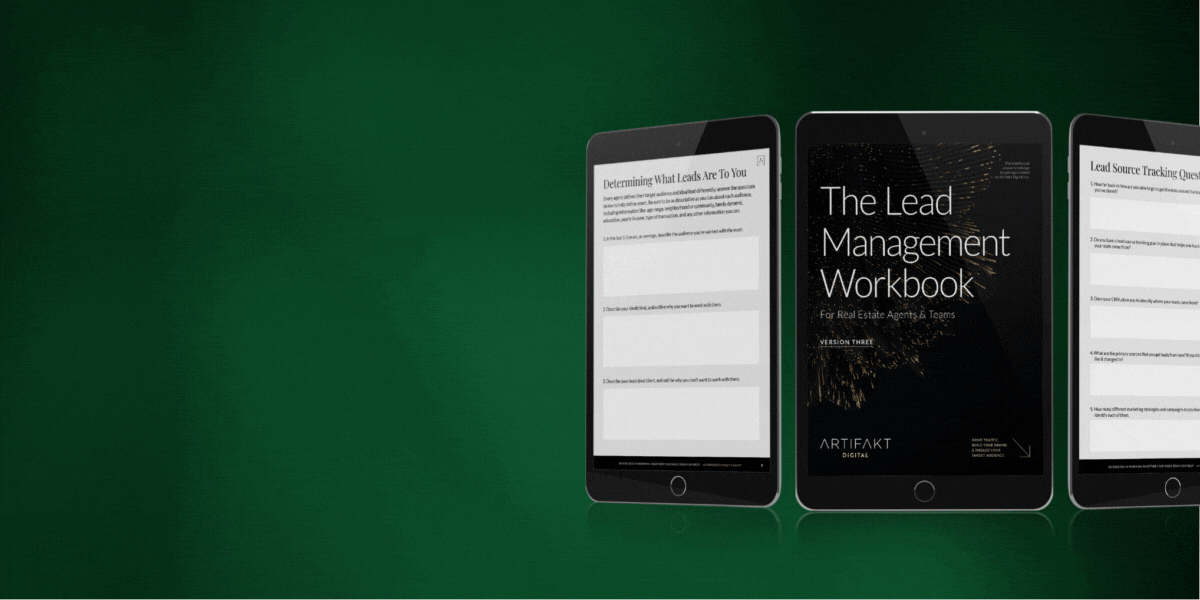Why You Should Drop Your Real Estate Marketing Funnel (And What to Do Instead)

When it comes to planning a real estate digital marketing strategy, there are a lot of different goals or definitions of success you can have.
But ultimately, the most important one that you want the people visiting to do is take some sort of action; and often they’ll need to take multiple actions before they trust you enough to take the main action that you want them to (which is working with you for a real estate transaction).
But as important as that is, most real estate agent marketing strategies don’t have those multiple actions planned at all. For a lot of agents, any conversions, engagements, or actions they get more-or-less happens by accident.
You’ve probably heard the words: marketing or customer funnel. And rightfully so. Marketing funnels have been around for decades and are a trusted source for many marketers. They’re a good way to get someone to take the action that you want them to. But they also don’t work as well as they did in the past.
Times have changed, and if you’re still using a marketing funnel (or if you’re not actively using anything at all), it’s time to retire it in favor of a marketing flywheel strategy, which is a much more modern approach and a key part of a strong inbound marketing strategy.
★ The marketing flywheel is a core component of inbound marketing. If you want to learn more about inbound marketing, have a look at these posts and resources:
- The Philosophy of Inbound Marketing, and Why it Works for Agents
- Planning a Real Estate Lead Flow Through Inbound Marketing
- Building an Inbound Marketing Strategy to Get Higher Quality Leads
But first, what’s the difference between the 2 marketing approaches? And why is one better?
Marketing Funnel VS Marketing Flywheel
A Marketing Funnel pushes people through a forced path to make them take a series of progressively more committal actions to get them to eventually become a customer.
➤ The main problem with a marketing funnel is that it’s one directional, meaning, it’s over once someone becomes a “customer”. Since getting someone through the funnel, and converting them into a customer, is a lot of work, it’s a bit of a lost opportunity for the relationship to end there. Plus, it means you continually have to get new customers, rather than continually nurturing the ones you already have.
A Marketing Flywheel continually engages and nurtures your database, often in the background, continuously, over and over (that’s why it’s a wheel; basically, it keeps your business growth spinning).
➤ A marketing flywheel works because it doesn’t end when someone becomes a “customer”. Instead, they move through the marketing flywheel’s stages of: Attract, Engage, and Delight, and then eventually becoming advocates for your brand (or as agents call them: referrals).
Here’s a bit of a breakdown of those stages:
1. Attract: In stage 1, you attract your audience by allowing them to discover you online by providing valuable content and building conversation (often multiple times), so you establish yourself as a trustworthy authority.
2. Engage: In stage 2, you create conversation with your audience that has now discovered your content, often through a lead nurturing strategy. This allows you to build an initial relationship with people, so that they continually see you as being helpful as part of their search process
3. Delight: In stage 3, you build on the general engagement stage by making things more personal and directly related to the person you’re engaging, which allows you to build a personal relationship with them.
You can see a full breakdown of those flywheel stages in this post right here.
★ The concept of the marketing funnel was initially conceptualized and popularized by Bryan Halligan, HubSpot’s CEO. If you’re interested, you can learn a lot more about the marketing flywheel, including visualization diagrams of how it works, on their website right here.
There’s also an outer level to the marketing fly-wheel, where someone moves through the stages of: Strangers, Prospects, Customers, and Promoters, which intentionally turns your customers into advocates once they’ve had a positive experience working with you.
If you’re building an inbound marketing strategy for your real estate business, then adopting the marketing flywheel is key to doing it successfully. Just by reading how it all works, you can probably see how a marketing flywheel is a better, more long-term approach to marketing.
Want to improve your overall lead generation plan? Download our Lead Management Workbook. It’s a self-guided, interactive workbook where you answer questions about your current lead generation plan, outline what’s working and what isn’t working, and put together a plan to improve it. And, it’s free to download.





















